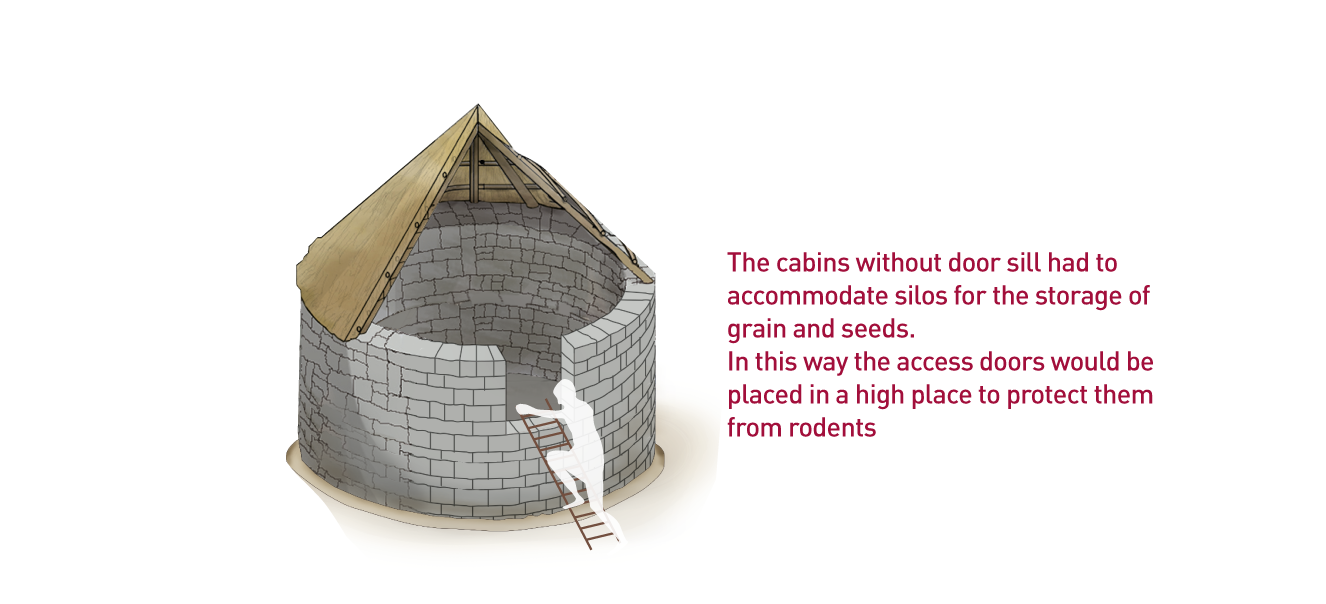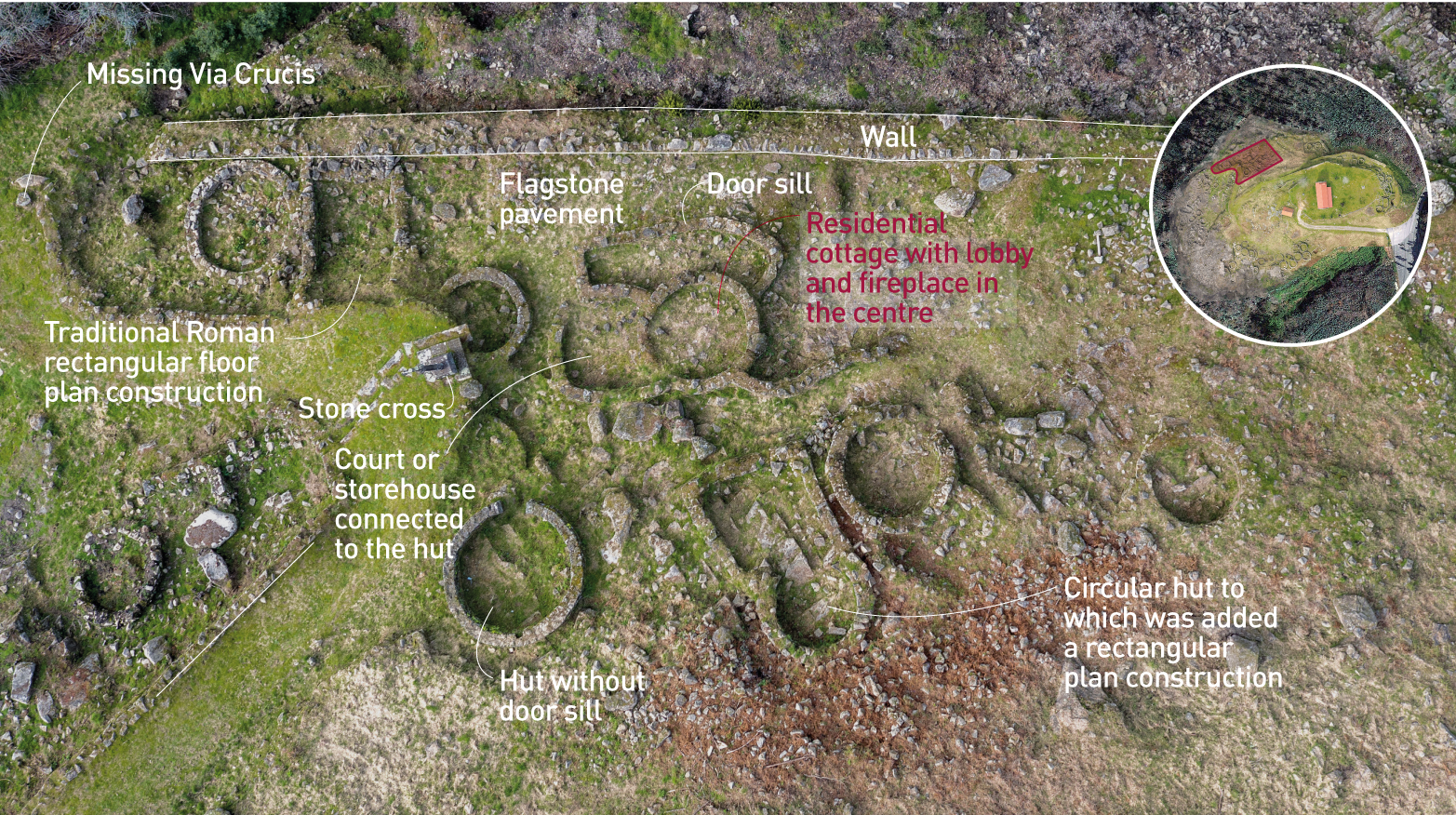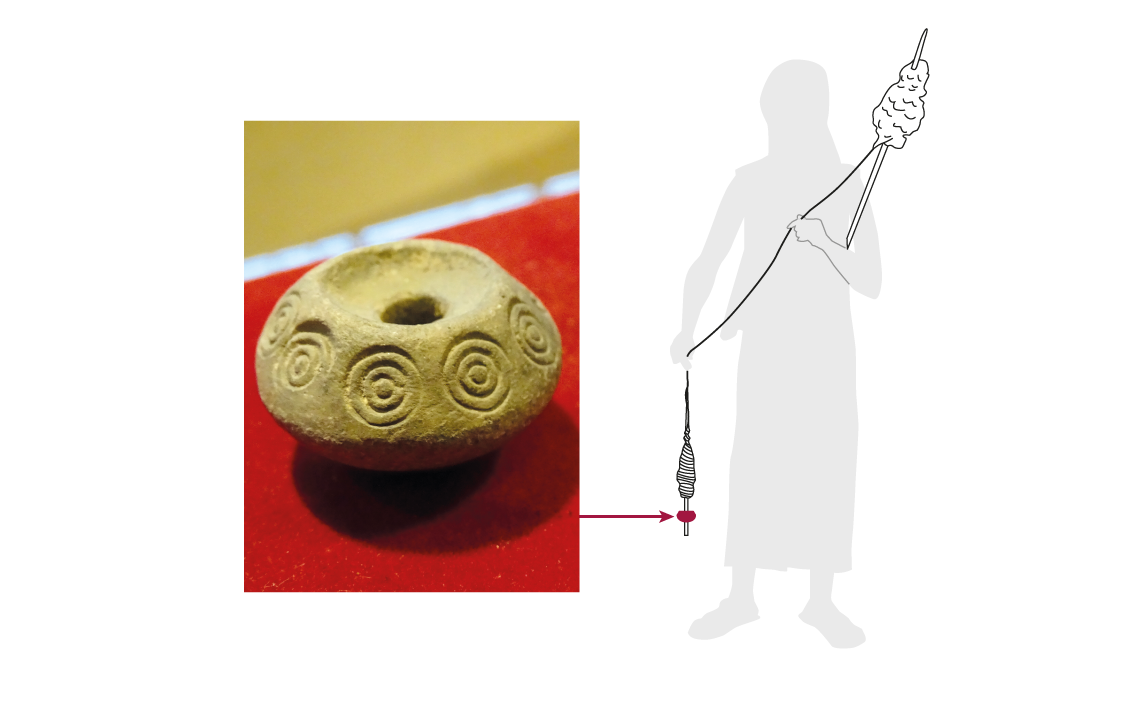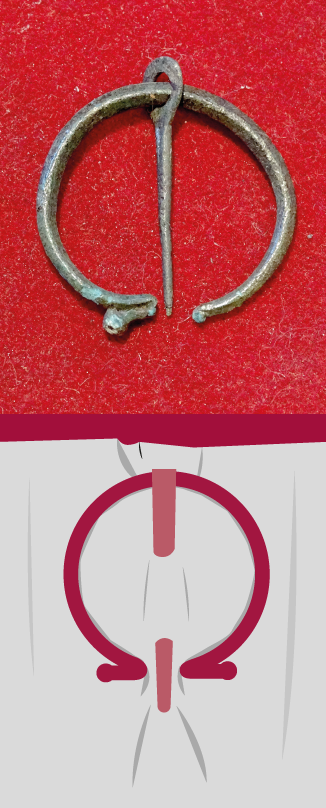Neuralgic center of the valley
As early as the II century BC there begins to emerge large settlements in height that decided to equip themselves with a monumental defensive system.
These are central places that, in a local context, increase in size due to the concentration of population from other prehistoric villages. This new reality, which lasted approximately until the 1st century BC, is known by the name of oppida or neuralgic centres, large Iron Age fortified settlements in which certain economic activities and political functions were centralized.
The complex that we see here is located in the second fortified enclosure of the fort that was created in the 1st century BC according to the dates given in the 1980s.
This period is characterized by the construction of huts with an atrium or lobby like the one that appears in the centre of the photograph. It is an enclosed area with an elliptical plan of smaller dimensions than the main building, which rises to expand and complement it, satisfying the needs of greater private space for its inhabitants.

The abandonment of the settlement, which took place between the end of the first century AD and the beginning of the II century AD, must have occurred peacefully in favour of new settlements at the bottom of the valley.
Spindles
Stone spindles, specifically those made from ceramics, are very common findings at the settlements.
Frequently decorated, they served as the base of the spindle, a wooden instrument on which a thread was wrapped at the time of weaving.
The cloth was made by women from wool and linen.
Brooches
Fibulae are a metal brooches used since prehistoric times by Greeks and Romans that spread across the European continent and also the Mediterranean. In Gallaecia they were also used by the Gallaeci people who inhabited the forts during the Iron Age.
It is an annualry example of Omega, a name that receives its resemblance to the last letter of the Greek alphabet. It is defined by having the end of the needle of the ring wrapped around a hoop ending in a counter-curved shape. The needle, of circular section, is independent of the ring, and thanks to its wide head moves freely through it. This type of brooch was in circulation between the II century BC and the IV AD.
On a symbolic level they would serve as an indicator of the status of their holder (position
Social, profession ...).

 The abandonment of the settlement, which took place between the end of the first century AD and the beginning of the II century AD, must have occurred peacefully in favour of new settlements at the bottom of the valley.
The abandonment of the settlement, which took place between the end of the first century AD and the beginning of the II century AD, must have occurred peacefully in favour of new settlements at the bottom of the valley.

